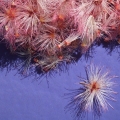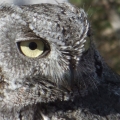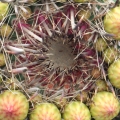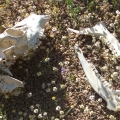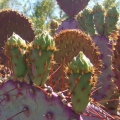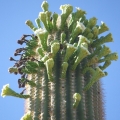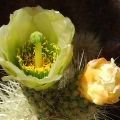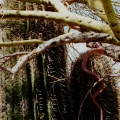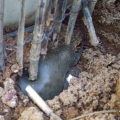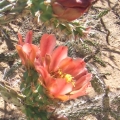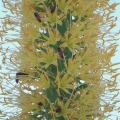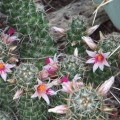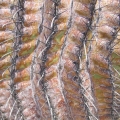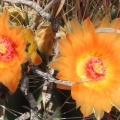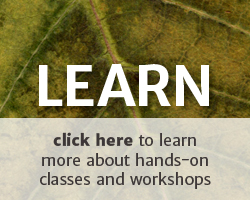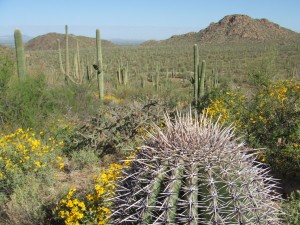
Expansive view west from the Tucson Mountain foothills, with saguaro cacti, palo verde trees, creosote bush, and yellow blooms of early Spring.
The Sonoran Desert contains the most biodiversity of all four North American deserts, and is one of the most unique ecosystems on the planet! The saguaro cactus grows native nowhere else on earth but here. Divided into six geographical subdivisions, the Sonoran Desert occupies areas of two countries and five states. Arizona (AZ) is the only state that includes parts of all four North American deserts: the Mohave, the Sonoran, the Great Basin, and the Chihuahuan.
Tucson, Arizona, is located on the north-eastern edge of the Upland Arizona Subdivision of the Sonoran Desert. Upland AZ Sonoran Desert is known as the “succulent desert” for its abundance of juicy cacti and succulent plants, and the rich array of other desert flora and fauna that inhabits this staggeringly beautiful place. Tall saguaro cacti and lush legume trees dominate the landscape. Arizona’s state tree is the colorful Palo Verde, and the state flower is the magnificent saguaro blossom.
Fascinating survival strategies evolved over time allow both plants and animals to thrive in the Sonoran Desert’s arid, hot, and seemingly inhospitable extremes, and offer us lessons on how to do the same ourselves. Estivation, brumation, microphylla, self-amputation, oh my! If you’re new to the Sonoran Desert, prepare to be awed and impressed by its beauty and diversity. If you’re a desert rat, celebrate with me this gorgeous, spiny, always surprising place we call home.
Launched in the mid 1990’s as one aspect of my multi-faceted work life, Desert Wisdom highlights some of the Sonoran Desert’s unique, accessible, and useful plants, from both wild and cultivated sources, including foods and medicines available throughout the year. Trees, shrubs, vines, cacti, and other plants that uniquely tolerate desert conditions also provide abundant food and habitat resources for desert animals.
Common legume trees like palo verde, ironwood, and mesquite act as “nurse” plants, providing protected germination and development zones under their canopies for plants vulnerable to desert extremes and other hazards. A keen interest in the people and cultures who made use of these resources has guided my curiosity and confidence in connecting to the plant world here. My love and admiration for desert animals is evidenced in my photos and writing.
Sampling cactus fruits and mesquite pod flour were early desert culinary adventures. A first experiment in wildcrafting involved collecting common desert medicinal plants for making oil-based herbal salve. This basic formula, with seasonal variations, has provided years of relief since, for healing minor skin irritations typically encountered in desert living.
Desert foods add excellent nutrition, variety, and flavor to the diet. Collecting them allows fun, friend-filled forays into beautiful places, plus good work for the day. Including traditional foods from plants like cholla, prickly pear, and barrel cactus, and palo verde, mesquite, and ironwood trees, may contribute to the prevention of serious lifestyle diseases like diabetes and obesity too. Every season provides overwhelming abundance, so we can learn to make what we need, use what we have, and share surplus, skills, and empowerment with others.
Desert Wisdom’s goal: a robust revival of the use of native and heritage foods and the health benefits they provide; local and regional food security; re-wilding the city by planting native, drought-tolerant, food-bearing, trees, cacti, and other plants supported by rainwater and grey water; to introduce and initiate those unfamiliar with desert living to its many wonders, challenges, requirements, and mysteries; restoration of local and regional watershed vitality; and an educated population that values and votes for the benefits of: a native landscape palette; quality of life for all life forms; a well-supported local food system; solar and other renewable energy; sane water use and conservation; and legislation and political will that demands these ethics and ideas be put into practice.
Cool Cacti
Super Seeds
Polly Pod’s Pointers
Native Cultivated Crops
Aloe & Other Allies
Sister Larrea
Mission Era Fruits
Foraging the Urban Wilds
Plant Walks
(see LEARN for details and descriptions)
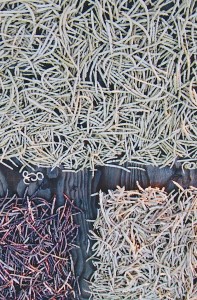 Beautiful Beneficial Bean Trees Guide:Meet some of the Sonoran Desert’s star legume trees: three native mesquites, two native palo verdes, and endemic ironwood, all useful food-producing plants. Color photos and drawings show tree bark, leaves, flowers, green and dry pods, seeds, seedlings, branches, full form, new growth, thorns, sap, etc, in various seasons and growth stages, so that positive identification can be made for recognizing, harvesting, and growing these generous trees. Captions provide detailed descriptions and other information about each tree and feature. (COMING SOON)
Beautiful Beneficial Bean Trees Guide:Meet some of the Sonoran Desert’s star legume trees: three native mesquites, two native palo verdes, and endemic ironwood, all useful food-producing plants. Color photos and drawings show tree bark, leaves, flowers, green and dry pods, seeds, seedlings, branches, full form, new growth, thorns, sap, etc, in various seasons and growth stages, so that positive identification can be made for recognizing, harvesting, and growing these generous trees. Captions provide detailed descriptions and other information about each tree and feature. (COMING SOON)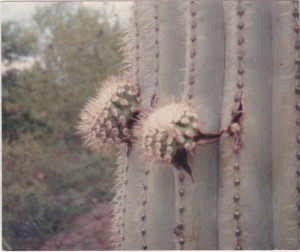 Cool Cacti Guide:Learn how to identify and ethically harvest various food-producing cacti, including cholla, prickly pear, barrel, and saguaro. Learn to process and use seeds, pulp, pads, and buds of some common and widespread cacti. Enjoy Spring, Summer, Fall, and Winter bounty. (COMING SOON)
Cool Cacti Guide:Learn how to identify and ethically harvest various food-producing cacti, including cholla, prickly pear, barrel, and saguaro. Learn to process and use seeds, pulp, pads, and buds of some common and widespread cacti. Enjoy Spring, Summer, Fall, and Winter bounty. (COMING SOON)